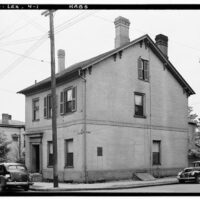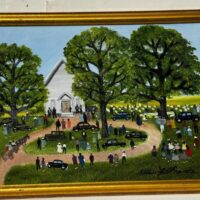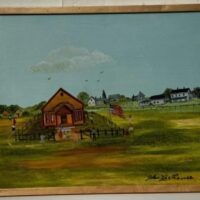Instead of turning away, the photojournalist is in the moment, following the action to capture iconic scenes that tell a story with pictures.
When it comes to documenting the past, focusing on people and events that have been systematically obscured or even erased in the official story, a pro like Raymond Thompson Jr. applied creative techniques to resurrect Appalachian ghosts from the 1930s. His powerful testimony illuminates one of the worst industrial disasters in U.S. history, the Hawk’s Nest Tunnel and Dam.
Thompson’s undergraduate work as an American Studies major laid the foundation for the project
“From my studies,” he explained in an interview with fellow photograph artist Wendell A. White, “I was left with this deep understanding of the importance of studying historical systems.
“I began thinking of America’s complex racial caste system as a system of oppression that is very hard to see at the micro level and that requires examining from a macro level.”
Thompson’s book, “Appalachian Ghosts,” is a brilliant reimagining of the people and the landscape of West Virginia’s Hawk’s Nest. Through a mix of photos, prose, and poetry, he strips away layer upon layer of history to expose cynical corporate cultures that extract what they need from the land and the people, and then turn away from the detritus.
RELATED: Read the other columns in Constance Alexander’s series for National Poetry Month:
- Poetry collection ‘Feeding the Ghosts’ celebrates promise of mornings
- Willie Carver Jr.’s book ‘Gay Poems for Red States’ is a must read
- Poet explores survival through ‘small things’
Visual documentation of the workers (predominately Black men) and the construction itself was limited. Archival documents were also scarce, so Thompson made a number of visits to the ravaged landscape for signs of the people touched by the tragedy.
According to Catherine Venable Moore’s foreword to the book, Thompson’s goal was to “repeople the story of the Hawk’s Nest Tunnel to expand its archive.”
“In this way,” she goes on, “it is an act of rebellion, defiance, and courage.”
Nearly two-thirds of the Hawk’s Nest workers were African American, an estimated 2,900 of them assigned to work in the tunnel. Excavating three miles underground, they were exposed to pure silica dust, leading to silicosis, an incurable disease that renders ordinary functions difficult. The least physical exertion — walking a few feet, for instance — is exhausting. As the disease progresses, the lungs lose all elasticity and suffer irreversible damage and death.
Even by the standards of the early 1930’s, conditions at Hawk’s Nest were deplorable. Safety precautions — wetting the rock face to minimize the dust or waiting between shifts for the dust to settle — were ignored or evaded. The men inhaled the fine white dust every minute of every shift they worked.
By the time the tunnel opened in 1934, there were reports of miners dead and dying from acute silicosis caused by working the dig. Today, at Hawk’s Nest State Park, a plaque from West Virginia’s Department of Culture and History lists the dead at 109, much lower than the actual number of casualties. Of those working underground, one estimate is that 764 died, while a 1936 congressional hearing numbered the casualties at 2,000.
Thompson first learned about the dam and tunnel through the poetry of Muriel Rukeyser, who had visited the region in the mid-1930s. She walked the area and talked to the survivors and the bereaved, documenting her findings in a lyric poem, “Book of the Dead.”
Like the Roman poet Virgil, Thompson guides readers through landscapes past and present, exotic and quotidian, personal and political. Each image or artifact connects Hawk’s Nest to the disgrace and dehumanization of racism. Even at that time, the early 1930s, enough was known about silicon dust to warrant better precautions. The tragic illnesses and deaths were the result of negligence and racism.
In the book’s afterword, Rebecca Altman remarked, “The failure to notify next of kin, the unmarked graves, the outright corporate denial before courts and Congress, the defacement of photographic records, the rewriting of history, the absence (for decades) of any public marker — all of this created the conditions for a collective forgetting, for positioning the company to rewrite its own history while erasing the lived experience of those lives bound up within its infrastructure.”
Published by University Press of Kentucky, “Appalachian Ghosts” defies collective forgetting by illuminating a shameful past.

Constance Alexander
Constance Alexander is a columnist, award-winning poet and playwright, and President of INTEXCommunications in Murray. She is a board member for Hoptown Chronicle.





